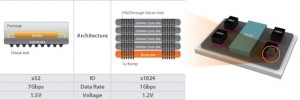Synopsys has added to its processor IP offering with new ARC EM processors with an enhanced instruction set architecture that combines RISC and DSP processing with support for an XY memory system.
The EM9D and EM11D processor cores benefit from being able to retrieve instructions and data from memories that are tightly coupled to the processor pipeline. This can reduce the number of accesses to system memory which improves latency.
The ARC MetaWare development tool now offers full C/C++ programming support for the cores’ DSP instructions and XY memory as well as a library of DSP functions.
The toolkit also includes an ITU-T base-ops library for developing voice codecs.
These include FFT and DCT, FIR and IIR filters, as well as vector and matrix math functions.
Likely applications may include speech recognition and audio processing.
EM DSP cores implement a three stage pipeline. These new cores integrate separate X and Y memories with hardware support for address generation and DMA to move data in and out of the memories.
This enables a sustained throughput of one 32×32 MAC operation or two 16×16 MAC operations per clock cycle with minimal energy and area overhead.
These new processors also support full integer, fractional divide and square root operations, unaligned loads/stores and bitstream parsing.
These features enable the EM9D and EM11D to deliver the additional DSP performance required to execute complex sensor algorithms, as well as improve processing efficiency for a range of audio formats including MP3, SBC, OPUS and AAC LC.



